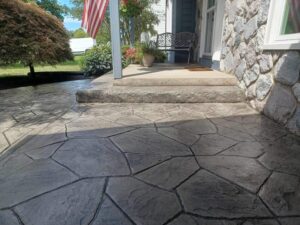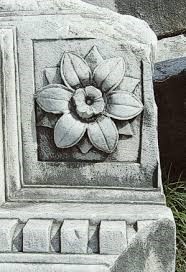Roman architecture stands as a testament to the ingenuity and engineering of an ancient civilization that left an indelible mark on the world. Not only did these ancestors quite literally pave the way, being the known creator of modern road systems. They created an infrastructure that is implemented to this day all over the world.
Roman Mastery of Aggregate
 Engineers of the Roman Empire developed techniques that have proven to withstand the test of time. Many of their structures still stand today and their methods are used in today’s driveways, concrete patios, foundations, garages, and highways.
Engineers of the Roman Empire developed techniques that have proven to withstand the test of time. Many of their structures still stand today and their methods are used in today’s driveways, concrete patios, foundations, garages, and highways.
The people of Rome’s advanced methods involved using multiple types of aggregate and concrete-like products. These methods created the backbone for modern-day construction.
After excavating, starting with a larger base similar to a crusher run #2 material allows the material to fill the void and allow water to pass through. After the large stone is compressed/tamped the next aggregate similar to a crusher run #1 is installed and compacted. The smaller stone is used to create a tighter compaction to ensure the highest quality workmanship. Next Romans would install sand to work as a leveling agent to install cobble or concrete surfaces creating the first roads of the world.
Concrete and the Roman Empire
The Romans were pioneers in the use of concrete, as well a material that would revolutionize construction. Unlike the Greeks, who primarily used stone and marble, the Romans harnessed the versatility of concrete to construct massive structures like the Colosseum, the Pantheon, and the aqueducts that spanned their vast empire.
Concrete allowed for greater flexibility in design and significantly reduced construction time, making it a cornerstone of Roman architectural innovation. The structures were not only remarkable in size but also in beauty. Romans created intercut decorative concrete designs in their work leaving the world in awe.
Modern Backyard Patios and Concrete
 Fast forward to the present day, and we find ourselves drawing inspiration from the Romans as we design our own outdoor spaces. Concrete, once again, takes center stage.
Fast forward to the present day, and we find ourselves drawing inspiration from the Romans as we design our own outdoor spaces. Concrete, once again, takes center stage.
Backyard patios often feature concrete as the primary building material, offering durability, versatility, and a sleek aesthetic. Just as the Romans employed concrete for grand structures, we utilize it to create functional and beautiful outdoor living areas.
Even outdoor structures like pergolas and pizza ovens stem from Roman influence incorporating their Dome technology and column structures. Concrete contractors are blessed to have these methods developed and proven for 100s of years creating beautiful outdoor designs might not be possible without the help of these great people.
Stamped Concrete a Modern Twist on an Ancient Art
One of the most intriguing aspects of Roman architecture is the meticulous attention to detail and decorative elements. In today’s backyard patios, we see a continuation of this tradition with the use of decorative concrete.
Decorative concrete techniques, such as stamped concrete, acid staining, and exposed aggregate finishes, allow homeowners to infuse their outdoor spaces with a touch of Roman-inspired elegance. Patios featuring stone patterns, brick, cobblestone, or even custom designed stamps can remind us of the grandeur of Roman courtyards.
Roman architecture’s influence on backyard patio and modern construction is a testament to the enduring nature of thoughtful design and engineering. The legacy of concrete and decorative elements has transcended time, providing inspiration for outdoor spaces that seamlessly blend aesthetics and functionality.
As we continue to draw from the past, our patios, driveways, roads and building become more than mere objects we use they become tributes to the ingenuity of those who came before us.


